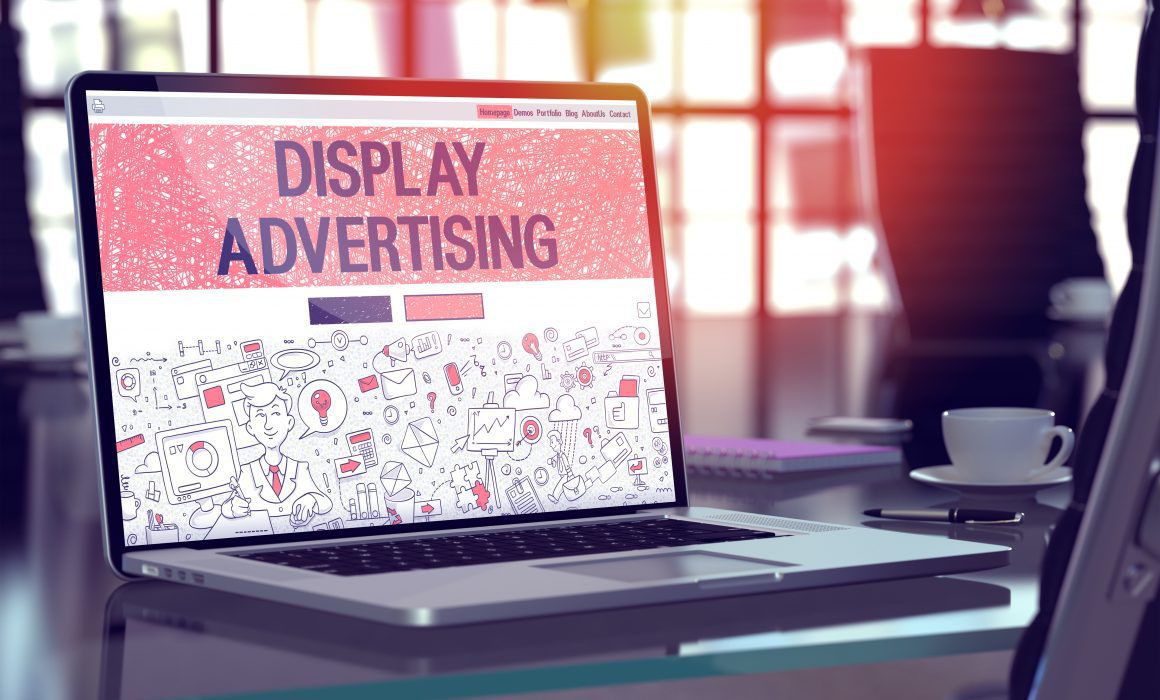Display Advertising: What You Need To Know
All entrepreneurs know that advertising is one of the core elements needed to assist your brand’s online visibility and, by extension, how you reach your target audience. No doubt you have heard chatter from other budding entrepreneurs about the types of display advertising they’re using to reach prospects, drive traffic, generate leads and make sales (conversions).
In this article, we’re going to give you a breakdown of display advertising so you can make an informed decision about whether it’s right for your business.
What is display advertising?
Display advertising (also known as banner advertising) is a form of paid media. They can be presented in numerous formats, typically images, photos, videos or HTML5 animations and accompanying call-to-action copy.
They appear on ad networks, most notably the Google Display Network and social media platforms such as Facebook, Twitter and Instagram.
Display advertising can be divided into three broad categories:
- Site placement ads: The advertiser/marketer selects the website(s) on which they would like to run their display ads.
- Contextual ads: Networks such as Google Display Network place ads on relevant websites, for example, showing an ad for a new sneaker line on a retail website.
- Remarketing ads: Remarketing display ads appear on other websites you visit in the form of a post-click ad that aims to entice you to return to a website on which you interacted but left before completing the conversion.
The different types of display advertising
Above, we mentioned four types of common display ad formats:
- Image, photo (static ads)
- Video
- HTML5 animations
However, like everything in the digital landscape, this type of advertising has evolved; here are a few display ads you should be familiar with within 2021.
Interactive ads
Interactive ads have features that allow your audience to interact with your product and/or service immediately. Two of the main types of interactive ads are
- Playable ads
- Augmented reality (AR) ads found on your mobile device
Cosmetics companies leverage the features of an AR advertisement. For example. If they want to promote lipstick, you’ll probably find you’re able to swipe across the image of a woman’s lips on your mobile device, giving you the chance to view the different shades of their new lipstick range.
Playable ads are perfect for companies advertising their new mobile game. You typically can play the game for a few minutes to get a taste and then are prompted to download it from your relevant app store.
Benefits: These ads are optimal for creating brand awareness, generating leads and making sales on mobile devices.
Lightbox ads
Lightbox ads are an expandable ad format that is intended for the Google Display Network. When a user hovers their cursor over the ad, it expands into a full-screen ad that can include video, audio, animation, as well as other features. Lightbox ads can be thought of as a type of virtual reality advertising through the immersive experience it provides.
Benefit: Lead generation, conversion.
Interstitial ads
Interstitial advertisements are full-screen ads that expand over the user interface of an application such as a mobile game. They appear during naturally occurring transition points while users engage with the app, such as loading the next stage of the game when the user levels up. Their full-screen coverage differentiates them from other ad types of the exact nature, e.g. pop-up, native, and banner ads.
Benefits: Increase in click-through rates and boosting the chance of conversion
Display advertising best practices
The main obstacle with display advertising is that users either don’t take notice of them or block them altogether. The best way to break through the mental barrier is to use amazing visuals and carefully constructed copy with a clear call-to-action (CTA).
Online advertising resource hub, Wordstream, sets out the five crucial best practice tips for display ads to lessen the chances of blocking.
- The best way to structure a display ad is to make your value proposition and CTA most prominent.
- Choose a simple colour palette that’s conducive to your branding and marketing goals.
- When it comes to typography, construct a hierarchy to make sure the most important information stands out.
- Keep the overall design of your display ads simple.
- Opt for unique images to grab the attention of fickle viewers.
The difference between display ads and native ads
If you’ve been Googling different paid advertising methods, you’ve likely come across native advertising. We want to make it clear that this is an entirely separate type of paid media.
Instapage states, “the term native advertising refers to a form of advertising that attempts to match the platform’s content. This is done to make the message more easily consumable by the users of that platform. Native ads appear in-feed and are non-disruptive, like suggested posts on Facebook or promoted posts on Twitter.”
So, in a nutshell, display ads are designed to stand out; native advertising aims to blend in with the specific platform on which they appear. Any time you see statements such as
- Suggested post
- Promoted stories; or
- Recommended for you
That’s native advertising. We’ll discuss this topic in an upcoming article [Watch this space]
Summary
Display advertising is effective if implemented correctly. It’s best to speak to a business consultancy with access to a world-class marketing agency that is well-versed in various paid media campaigns. The benefits of display advertising are
- Visually appealing
- Targeted to your ideal audience
- Promote brand awareness
- Less expensive than other paid advertising options
- You can track and monitor key performance metrics



